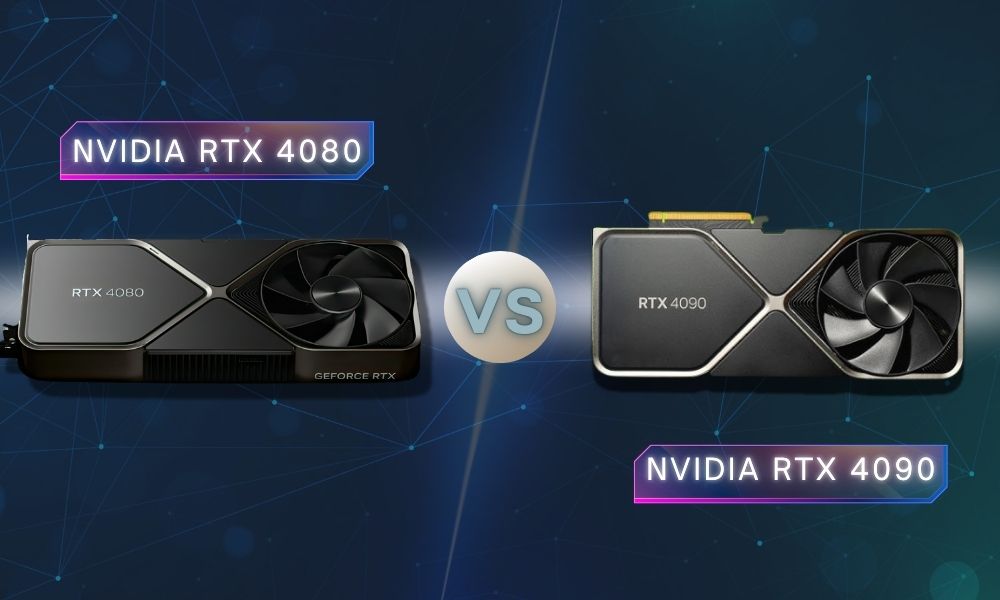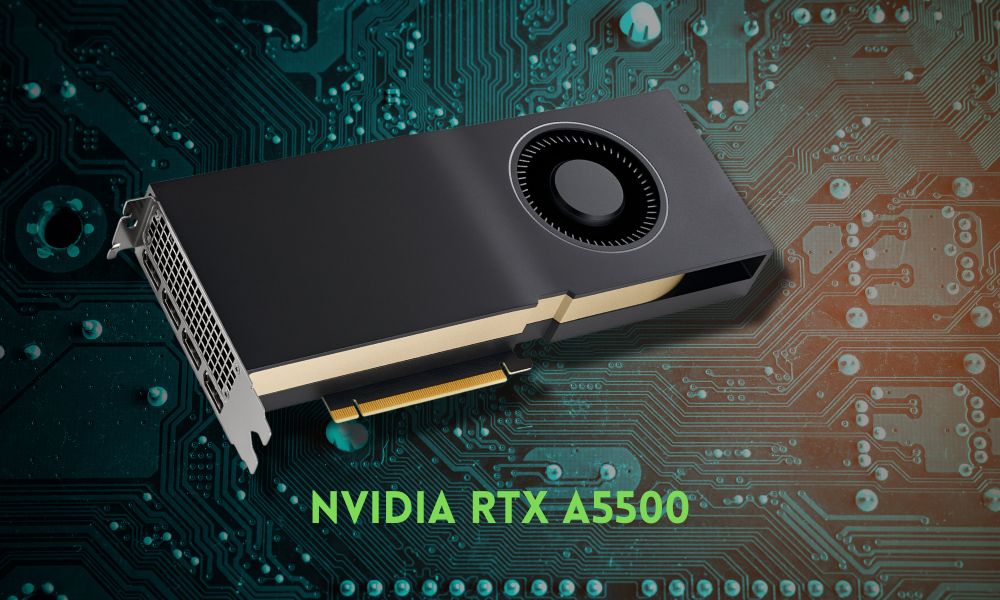In modern computing, GPUs have transcended their initial purpose of rendering graphics. They have become indispensable for various tasks, including scientific simulations, artificial intelligence, and data analysis. With thousands of cores working simultaneously, their parallel processing power allows them to handle complex calculations and data processing at unprecedented speeds. This significance has led to fierce competition between AMD and Nvidia as they strive to provide the best GPUs for various applications.
AMD and Nvidia are the most prominent names in the GPU industry. AMD’s Radeon series and Nvidia’s GeForce lineup are known for their power and performance. AMD often emphasizes affordability and value, while Nvidia focuses on cutting-edge technology and innovation. Both companies have their loyal fan bases, and their rivalry drives continuous advancements in GPU technology.
Architecture Deep Dive
The Graphics Core Next (GCN) architecture employed by AMD is renowned for its focus on parallelism. It allows AMD GPUs to handle multiple tasks simultaneously, making them suitable for gaming, content creation, and scientific computing. GCN’s modular design and support for open standards like Vulkan and OpenCL have contributed to its versatility and appeal.
Nvidia’s CUDA (Compute Unified Device Architecture) architecture is synonymous with high-performance computing. It provides a robust platform for parallel processing and is widely used in scientific research, artificial intelligence, and deep learning. CUDA’s development tools and libraries enable developers to tap into the immense computational power of Nvidia GPUs, making it a preferred choice for many researchers and data scientists.
While both architectures excel in their domains, their parallel processing approaches differ. AMD’s GCN focuses on general-purpose computing, while Nvidia’s CUDA is optimized for specific tasks. A comparative analysis will help users understand which suits their needs better.
Performance Metrics
Benchmarking GPU Speed and Efficiency
To gauge the performance of AMD and Nvidia GPUs, benchmarking is essential. Various benchmarking tools and suites, such as 3DMark and FurMark, allow users to evaluate these graphics cards’ speed and efficiency objectively. These metrics offer insights into which GPU is better suited for particular tasks.
Frame Rate Analysis in Gaming
For gamers, frame rates are critical. Software like FRAPS and built-in frame rate counters help measure a GPU’s ability to deliver smooth gaming experiences. High frame rates ensure an immersive and responsive gaming experience, making it a key consideration for gamers choosing between AMD and Nvidia.
Parallel Processing Power Comparison
Parallel processing power is significant for tasks like AI and scientific simulations. AMD and Nvidia offer GPUs with varying degrees of parallel processing capabilities. Understanding the importance of parallel processing and comparing the two manufacturers’ offerings is crucial for professionals in these fields.
Gaming Experience
AMD has made notable strides in optimizing gaming experiences. Their Radeon graphics cards are known for providing excellent value for gamers, with features like FreeSync and AMD FidelityFX enhancing gameplay. Examining AMD’s impact on the gaming landscape reveals its commitment to delivering affordable and enjoyable gaming experiences.
On the other hand, Nvidia has pioneered cutting-edge gaming technologies, such as ray tracing and DLSS (Deep Learning Super Sampling). These innovations have reshaped the gaming industry and set high standards for visual fidelity. Understanding Nvidia’s influence helps gamers appreciate the technological advancements they bring.
Price and Value Proposition
AMD has been known for adopting a competitive pricing strategy to provide value-driven alternatives in the GPU market. Their GPUs often come at a lower initial cost than Nvidia’s offerings, making them attractive to budget-conscious consumers.
In contrast, Nvidia has pursued a premium pricing philosophy for its GPUs. They position themselves as leaders in cutting-edge technology and innovation, so their graphics cards tend to have a higher price tag.
Evaluating the value for money offered by AMD and Nvidia GPUs is essential for consumers. Consider factors such as performance, features, and long-term reliability relative to the price. It helps users determine which GPU aligns better with their needs and budget.
Market Share and Adoption
Current Market Share Trends
Monitoring current market share trends is essential as it reflects the evolving landscape of the GPU industry. These trends highlight whether AMD or Nvidia is gaining or losing ground, which can indicate the reception of their product offerings and overall market health. Market share trends also influence investor sentiments and can signal potential shifts in the competitive landscape.
Factors Influencing GPU Adoption
Numerous factors influence GPU adoption, including technological advancements, pricing, and software compatibility. Understanding these factors is pivotal because they determine which GPUs consumers ultimately choose. Factors like gaming performance, AI capabilities, and ecosystem support can significantly impact a consumer’s decision, making them essential for both manufacturers to consider.
User Preferences and Brand Loyalty
User preferences and brand loyalty often stem from previous positive experiences with a particular GPU brand. These factors influence consumer choices and can lead to long-term loyalty. Recognizing the importance of user preferences and brand loyalty helps manufacturers tailor their products and services to meet their customers’ expectations and maintain a competitive edge.
Innovation and Technological Advancements
AMD’s recent technological breakthroughs, such as the RDNA architecture and Infinity Cache, are significant because they enhance gaming performance, power efficiency, and versatility. These innovations are vital for staying competitive in the rapidly evolving GPU market, as they directly impact the user experience and differentiate AMD’s offerings from its rivals.
Nvidia’s reputation for introducing cutting-edge technologies like ray tracing, DLSS, and AI hardware with RTX series GPUs is critical for staying at the forefront of innovation. These contributions redefine the possibilities of what GPUs can achieve and expand their applications into fields beyond gaming. Nvidia’s technological leadership shapes the industry’s direction.
The ongoing race between AMD and Nvidia for future innovations is paramount. This competition drives both companies to invest heavily in research and development, ultimately benefiting consumers with groundbreaking advancements in GPUs. As they continue to push the boundaries of technology, consumers can look forward to more robust and feature-rich graphics cards in the future.
Compatibility and Ecosystem
AMD GPU Compatibility Across Devices
AMD has made efforts to ensure its GPUs are compatible with various devices, from gaming laptops to workstations. Their commitment to providing diverse hardware options enables users to find the right AMD GPU for their needs. Examining AMD’s compatibility across devices showcases their versatility in catering to various user preferences.
Nvidia’s Ecosystem Integration
Nvidia has established a robust ecosystem that goes beyond just graphics cards. Their integration of GPUs with technologies like NVIDIA RTX Studio laptops, NVIDIA G-SYNC monitors, and NVIDIA SHIELD TV creates a seamless and interconnected user experience. Understanding Nvidia’s ecosystem highlights its focus on delivering a holistic user experience.
Cross-Platform Compatibility Challenges
Despite strides in compatibility, cross-platform compatibility can still pose challenges, especially in scenarios where AMD and Nvidia GPUs must work together. Compatibility issues can affect users who rely on software and hardware from different manufacturers. Identifying these challenges underscores the importance of smooth cross-platform integration for seamless user experiences.
Real-World Performance Scenarios
GPU Performance in Content Creation
Content creators, including graphic designers and video editors, rely heavily on GPUs for rendering and processing tasks. Evaluating GPU performance in content creation scenarios provides insights into how well AMD and Nvidia GPUs handle resource-intensive software like Adobe Creative Suite and Autodesk Maya, impacting professionals’ productivity in these fields.
GPU Performance in Machine Learning
Machine learning applications require substantial computational power, making GPUs essential. AMD and Nvidia offer GPUs suitable for machine learning tasks, but their architecture and software support can impact performance. Analyzing GPU performance in machine learning scenarios is crucial for data scientists and AI researchers looking to maximize efficiency.
Real-Time Rendering and Visualization
In industries like architectural visualization and gaming, real-time rendering is a game-changer. AMD and Nvidia GPUs are key players in this field, with technologies like ray tracing and AI-driven rendering. Assessing real-time rendering and visualization performance helps users understand the capabilities of these GPUs in creating immersive, lifelike visuals.
Summary
In real-world performance scenarios, AMD and Nvidia GPUs have showcased their capabilities in content creation, machine learning, and real-time rendering, catering to the diverse needs of professionals, researchers, and enthusiasts.
Ultimately, the choice between AMD and Nvidia GPUs hinges on individual preferences, specific use cases, and budget considerations. Whether you prioritize value for money, cutting-edge innovation, or seamless ecosystem integration, both AMD and Nvidia offer compelling options to meet your requirements.
As technology advances, the competition between these graphics giants remains fierce, promising consumers and professionals a bright future filled with even more powerful, feature-rich GPUs. Regardless of your path, this GPU showdown has equipped you with the knowledge to make an informed decision, ensuring your computing experience is tailored to your needs and aspirations in this ever-evolving world of graphics processing.





